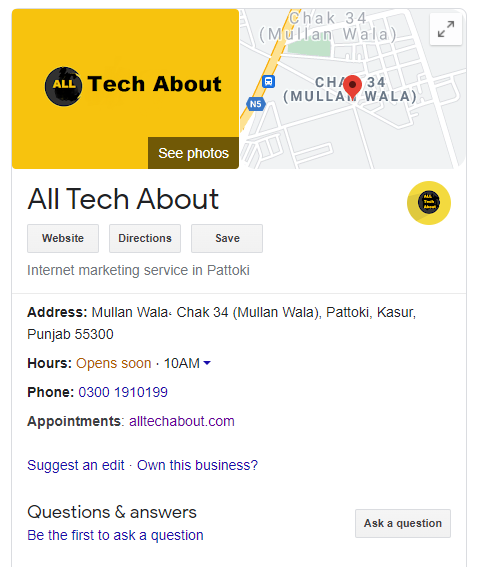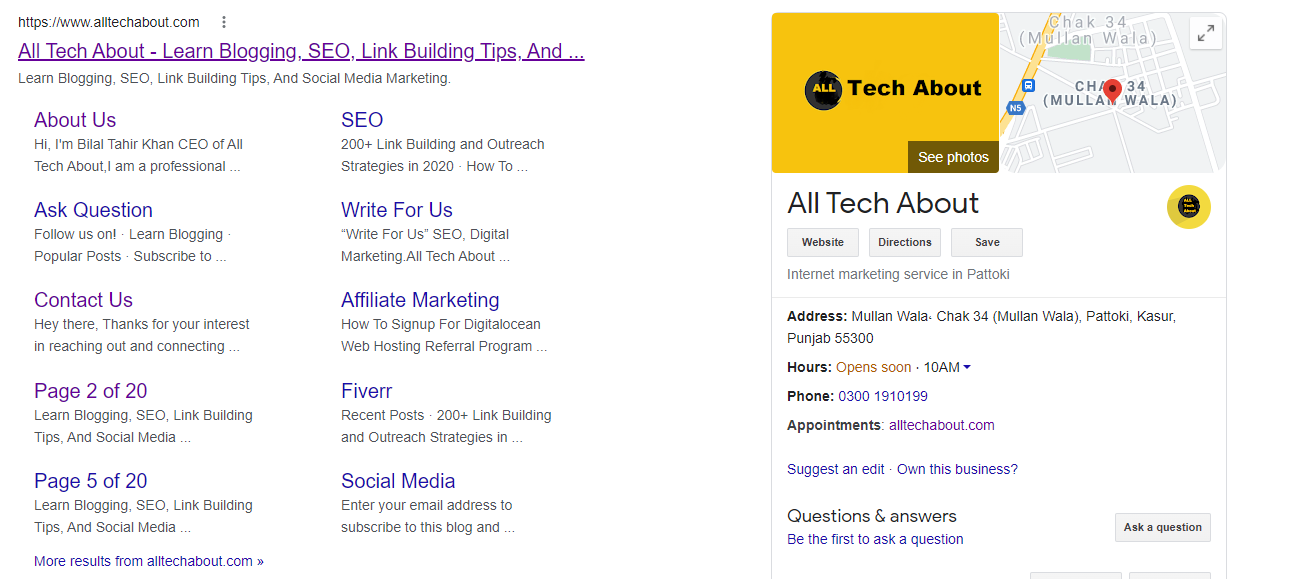Local SEO is essentially optimizing your online presence to attract more local customers. It involves a bunch of strategies to make your business more visible in local search results on Google.
Local SEO strategies are a lot different than global strategies used by companies targeting consumers.
1. Local SEO is important for businesses that want to target a specific geographic area.
2. There are many techniques that can be used to improve local SEO rankings.
3. One of the most important factors in local SEO is the business’s website address.
4. Other important factors include the business’s name, address, and phone number.
5. There are many free and paid tools that businesses can use to improve their local SEO rankings.
What is local SEO?
Local search engine optimization (SEO) is the process of ‘optimizing’ your web presence in order to be more attractive to local searches. These are undertaken on Google, Bing, and other such search engines. Local SEO is the process of optimizing a site in order to increase traffic, leads, and brand awareness from search. The most common local SEO activities include choosing local keywords and optimizing a business’s Google My Business profile.

- Google Business Profile
- Building citations
- Local link building
- Optimizing your Website
- Developing your reputation
What is the difference between SEO and local SEO?
Local SEO is a form of search engine optimization that is designed to help businesses rank higher in search engine results pages for queries that are specific to their geographic location. Unlike traditional SEO, local SEO efforts are focused on optimizing a business’s website and online presence for customers in a particular area. This can include optimizing the business’s website for local keywords, building citations and links from other local websites, and creating informative and engaging content that targets local audiences.
Local SEO: Local SEO has a geographical dimension to it. Local SEO for a local business is the art of building signals of relevance to a specific location (usually a brick-and-mortar business or service area).
Organic SEO: Organic SEO is not a geographical practice; it’s a marketing practice for a website.
How Does Local SEO Work?

To set the table, you should consider establishing all of the following mediums that make sense for the business and its customers:
- In-person
- Curbside messaging
- Home delivery messaging
- Text messaging
- Direct Messaging, including Google Messaging
- Live Chat
- Review responses
- Review requests
- Phone
- On-hold phone messaging
- Surveys
- Social media exchanges
- Post-transactional landing page messaging
- Call-to-action text
All of these can be managed by honoring language that conveys your appreciation of your customers.
Local Pack
The local pack typically appears at the top of the SERPs for local searches. It consists of three organic results, although some ads may feature here. You also get a map with pins for each ranking location.
What Ranking do Factors Matter To Local SEO?
There are many ranking factors that go into local SEO, but some are more important than others. The most important ranking factors for local SEO are:
1. Having a consistent NAP (Name, Address, Phone Number) across all directories.
2. Creating and optimizing your Google My Business listing.
3. Getting positive reviews from customers.
4. Having a website with accurate and relevant information about your business.
How can you optimize your website for local search?
If you’re a local business, you should be using your website to promote your presence on Google Maps. Google My Business is a tool your business can use to meet Google’s specifications. Do this before you set it up so Google My Business is appropriate for your business.
Create and validate a Google My Business page for your organization.
- Business Name: Make sure Google displays the correct business name and doesn’t display any duplicated entries.
- Address: If you operate a brick-and-mortar business, you’ll want to double-check that Google displays the correct address.
- Service Area: If you’re a “Service Area Business” that delivers goods and services, be sure to specify the exact regions you serve.
- Choose Business Category: The category you select will influence how your business appears in Google searches. Certain GMB features are specific to business categories—for instance, hotels display what amenities they offer.
- Contact Information: This is a crucial one—after all, if your customers can’t get in touch with you, how will you get business? At the very least, enter your phone number, email, and website URL.
- Verify: After submitting all of your information, you’ll need to verify your business by entering a verification code. Google provides three options for doing so:
- Postcard: This is the most common method and involves a verification postcard sent to an address you provide.
- Phone: If you’re eligible, you may choose to receive a verification code via an automated message.
- Email: Not all businesses can use email verification. If you’re eligible, you’ll receive your verification code via email.
- Make use of Google Posts from inside your Google account.
- Encourage your consumers to provide feedback on your website.
- Respond to evaluations in a genuine manner, indicating your location.
On-Page & Off-Page And Technical SEO
- On-page SEO is anything done directly on your website to increase its online visibility. This includes using keywords strategically in your content, writing compelling meta titles and descriptions, and designing your site to have a smooth user experience.
- Off-page SEO includes activities done outside of your site to improve its search performance. Remember SEO ranking factors like prominence? In essence, off-page business SEO services work on giving your site a better reputation and thereby making it more prominent. Common tactics include publishing guest posts and getting your site listed in relevant directories.
- Technical SEO In the world of SEO, there are two main types: technical SEO and local SEO. Technical SEO is the process of optimizing your website and its structure for Google’s search engine algorithms. Local SEO is the process of optimizing your website for customers in your local area. Both are important for getting your website ranked as high as possible in Google’s search engine results pages (SERPs).
Voice Search Matters For Local Search
When people speak to their computer or their smart home device, they phrase their Internet searches differently than type them in the search bar. These searches are longer. Because of this, you want to explore how people naturally talk to create content on your internet site if you’re attempting to be discovered for local voice searches.
Mobile optimization of a website
According to recent research, 50% of website visitors use a mobile device when browsing your site. If your customer realizes that they have to purchase something immediately, they will search for it on their phones.
Localize Your Content
You can do this by:
- Providing region-specific tutorials, local customer success stories, and regional case studies
- Partnering with local businesses
- Getting involved with local events
- Using social media tools to connect with potential customers
What are the benefits of local SEO?
1. Local SEO can help small businesses reach a specific audience in their area.
2. Local SEO can help businesses with limited resources compete with larger businesses.
3. Local SEO can help businesses connect with customers who are looking for local products or services.
4. Local SEO can help businesses track their online marketing efforts more effectively.
Local SEO Audit
Local SEO is important for businesses because it helps them to be found by people in their local area. There are a few things that businesses can do to improve their local SEO, such as making sure their Google My Business listing is accurate and complete and getting positive reviews from customers. Local SEO can also be improved by creating unique and relevant content for local audiences and targeting keywords that people in your area are likely to use when searching for businesses like yours.
GBM Audit– What does your Google My Business look like on the search engine results pages? Is the information provided correctly?
Google Search Console Audit – Is your website accessible to be crawled? Is there anything wrong with it that would make indexing difficult?
On-Page SEO Audit – Does your website include all of the on-page SEO components that are necessary for ranking success?
Citation Audit– Ensure that all of your citations in the major business directories are accurate by doing a Citation Audit.
Competitor Analysis – How does your website compare to the websites of your competitors? Are there any loopholes in your knowledge that you will need to fill? In terms of link building, content, design, as well as placement, how do you compare to your competitors?
Website Audit – How well does your website perform in comparison to the competition?
How do you track your local SEO progress?
Local SEO is the process of optimizing a website for local search results. This can be done by adding your business to online directories, creating location-based pages on your website, and optimizing your website for local keywords. The goal of local SEO is to improve your website’s visibility in local search results, which can help you attract more customers from your local area.
If you’re looking to track your local SEO progress, there are a few things you can do.
Conclusion:
Local SEO is an important part of your online marketing strategy. There should be more done to enhance the business’ reputation and establish its position. With an extensive list of potential improvements, the accompanying recommendations will help this enterprise improve its reputation and potentially drive growth.
